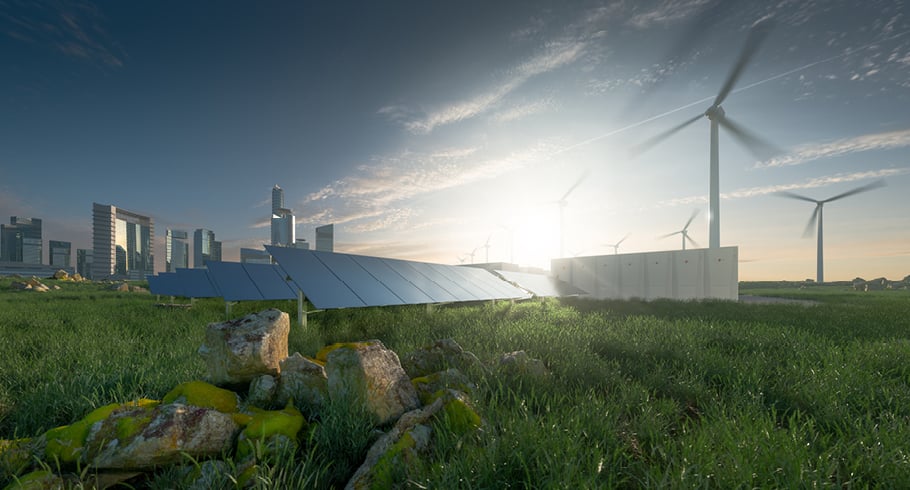Decarbonisation has become the energy keynote of the 21st century, and has triggered some major changes in the way we generate – and price – electricity in the UK.
The government’s push towards Clean Power 2030 is now accelerating this rate of change – and this is set to have a significant impact on the cost of the power your business consumes.
The following 10 points summarise the key developments causing the rising cost of electricity so far, and outline some of what’s set to come.
1. From centralised fossil fuels to distributed renewables
The biggest change, which began slowly in the early 2000s, is the national shift away from large centrally-located fossil fuel power stations to smaller, more diverse and often remotely-located renewable generation, such as wind and solar farms.
2. Green subsidies: driving investment through non-commodity
charges
 To support this process, an increasing number of green subsidies have been created by successive governments to facilitate investment, with the costs recouped directly from consumers via the non-commodity charges added to electricity invoices.
To support this process, an increasing number of green subsidies have been created by successive governments to facilitate investment, with the costs recouped directly from consumers via the non-commodity charges added to electricity invoices.
3. Expanding the grid: meeting the demands of remote generation
The electricity network is also having to dramatically adapt and expand capacity to transport power from far and wide. For example, some of the largest wind farms are located off the coast of Scotland, many hundreds of miles from the UK’s biggest population centres. Over the next decade, this network expansion is estimated to cost around £60 billion, with costs recouped via higher network charges added to electricity invoices.
4. Managing intermittency: the challenge of renewable supply
The increase in renewable generation replacing older fossil fuel plant means we can no longer rely on predictable, scheduled power generation 24/7 – and instead must find ways to manage demand from less predictable and intermittent generation.
5. Balancing the grid: rising costs of keeping supply and demand in check
The job of balancing supply and demand on the grid is becoming increasingly challenging – and the balancing charges added to electricity costs are therefore getting a lot more expensive.
6. Ensuring winter reliability: the role of the Capacity Market (CM)
We’ve also seen the introduction of schemes to ensure we have supply when we need it most - for example, the CM to lock-in generation capacity over the winter months. This again adds further cost to electricity invoices.
7. Electricity costs on the rise: a 25-year trend
As a result of these increasing non-commodity charges, total invoiced electricity costs have risen year on year over the past 25 years, from around £40/MWh in 2000 to an average £200/MWh today.
8. Clean Power 2030: accelerating decarbonisation and cost growth
Now with the government’s Clean Power 2030 Action Plan – by far the biggest-ever national programme to rapidly accelerate the UK’s decarbonisation goals – we’ll see a huge increase in both renewable generation and electricity costs over the coming years.
9. Market volatility: the ripple effect on wholesale energy prices
There is also a knock-on impact to the wholesale energy market, with increased volatility overall and reduced liquidity in the forward-term markets.
10. Mitigating costs: strategies to protect your bottom line
The good news is there are steps you can take to mitigate the impact to your bottom line – from building in flexibility to your operating model, to reviewing your purchasing strategy to take advantage of cheaper prices in the short-term markets.
/npm214%20Digital_H_UB132.jpg)
/npm214%20Digital_H_UB141.jpg)



.png)
/npm214%20Digital_H_UB121.jpg)
/npm214%20Digital_H_UB102.jpg)
/npm214%20Digital_H_UB95.jpg)
/npm214%20Digital_H_UB139.jpg)
/Author%20Profile%20Evans_Stephen_G.png)
 To support this process, an increasing number of green subsidies have been created by successive governments to facilitate investment, with the costs recouped directly from consumers via the
To support this process, an increasing number of green subsidies have been created by successive governments to facilitate investment, with the costs recouped directly from consumers via the 